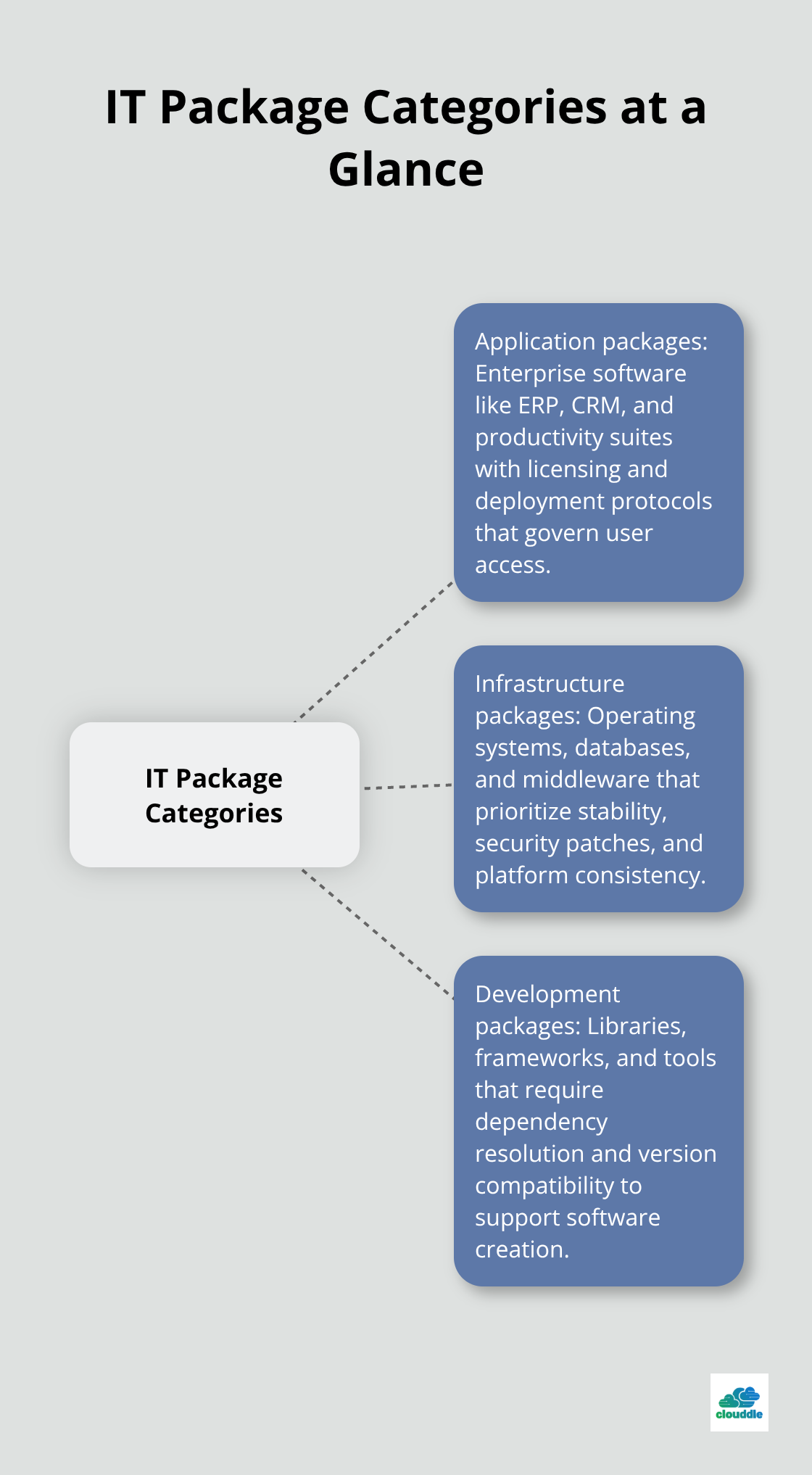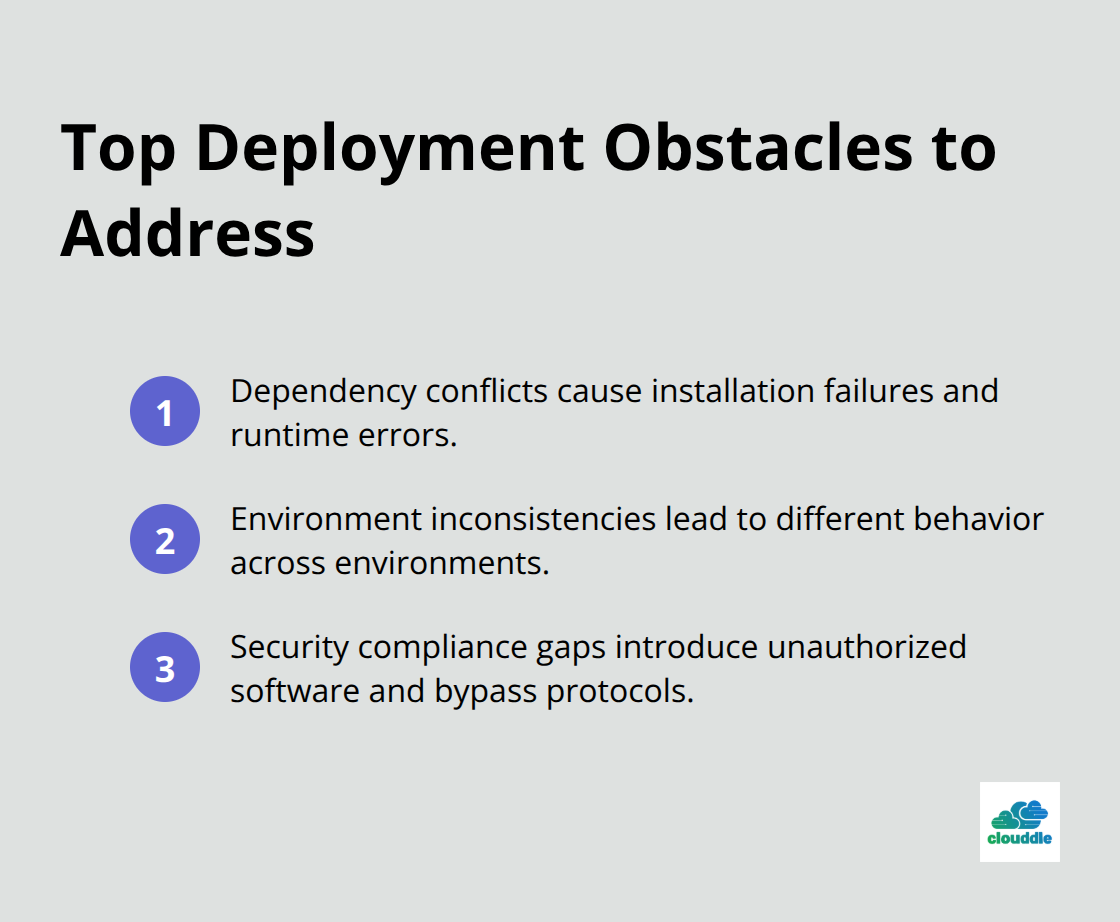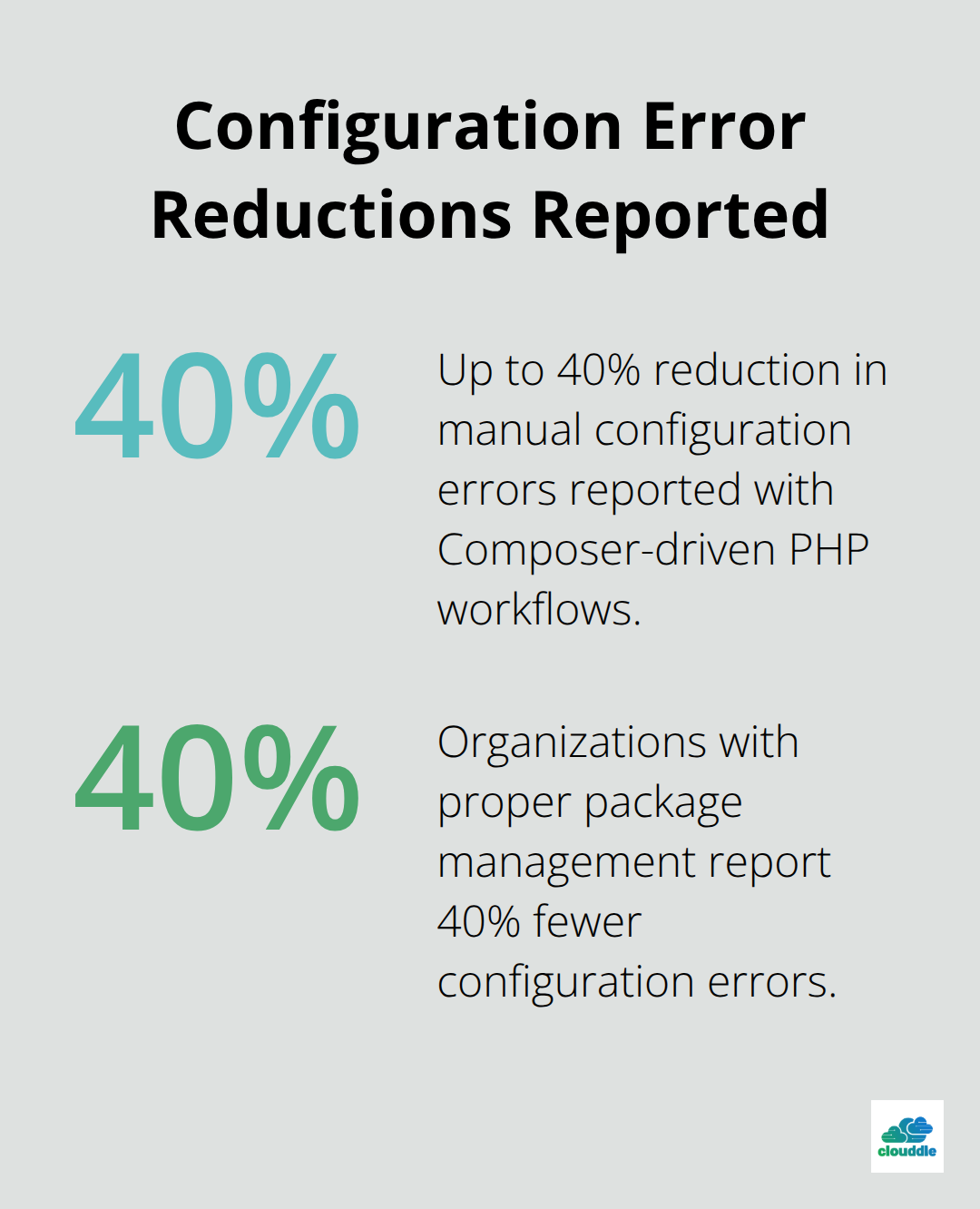Managing IT packages and computerised systems effectively determines whether your organization runs smoothly or faces constant technical disruptions. Poor package management leads to security vulnerabilities, system conflicts, and operational downtime.
We at Clouddle see companies struggle daily with outdated deployment processes and fragmented system oversight. The right approach transforms IT management from reactive firefighting into proactive strategic advantage.
Understanding IT Package Management Systems
IT package management systems encompass three distinct categories that organizations must handle differently. Application packages include enterprise software like ERP systems, CRM platforms, and productivity suites that require specific licensing and deployment protocols. Infrastructure packages cover operating systems, database management systems, and middleware components that form your technology foundation. Development packages consist of programming libraries, frameworks, and tools that support software creation and maintenance.

Each category demands unique management approaches because application packages focus on user access and licensing compliance, infrastructure packages prioritize system stability and security patches, and development packages require dependency resolution and version compatibility.
Core System Management Components
Effective computerised system management relies on four fundamental components that work together. Configuration management tracks all system settings, software versions, and hardware specifications across your entire infrastructure. Change management processes control how modifications get implemented, tested, and rolled back if problems occur.
Asset management maintains accurate inventories of all software licenses, hardware components, and their current status. Monitoring systems provide real-time visibility into system performance, security threats, and resource utilization. Organizations that use comprehensive configuration management tools experience significantly fewer system outages according to recent industry research.

These components must integrate seamlessly because isolated management creates blind spots that lead to security vulnerabilities and operational failures.
Major Deployment Obstacles
Package deployment faces three persistent challenges that derail IT operations. Dependency conflicts occur when different applications require incompatible versions of shared libraries or system components, which creates installation failures and runtime errors. Environment inconsistencies between development, testing, and production systems cause applications to behave differently across environments.
Security compliance gaps emerge when package installations bypass established security protocols or introduce unauthorized software components. Manual deployment processes amplify these problems because human intervention often leads to developer mistakes that can delay or fail the deployment process entirely.
The next step involves implementing proven strategies that address these fundamental challenges and establish reliable managed IT services workflows.
Best Practices for Managing IT Packages
Documentation and Standardization Requirements
Organizations that maintain comprehensive package inventories can improve their release management processes significantly. Create detailed records for every package that include version numbers, dependencies, installation requirements, and rollback procedures. Document configuration changes immediately after implementation rather than postponing documentation tasks that teams often forget under pressure.
Establish naming conventions for packages, environments, and deployment artifacts that everyone follows without exception. Version control systems like Git must track all package configurations and deployment scripts to maintain complete audit trails.
Automated Update Management
Automated update management prevents the security vulnerabilities that manual processes create. Schedule regular updates during maintenance windows and test all changes in staging environments that mirror production systems exactly. Implement automated rollback mechanisms that activate when performance metrics drop below predefined thresholds.
Teams that automate their update processes can significantly reduce compliance costs, as non-compliance costs 2.65 times more than maintaining proper compliance standards.
Security and Access Controls
Access control implementation requires role-based permissions that limit package installation rights to authorized personnel only. Create separate service accounts for automated deployments and rotate credentials quarterly to minimize security exposure.
Monitor all package management activities through centralized logging systems that alert administrators to unauthorized changes or suspicious installation patterns. Multi-factor authentication adds an extra security layer for administrative access to package management systems.
The foundation you build through these standardization practices directly impacts which tools and technologies will work best for your specific environment and operational requirements. Consider implementing IT asset management best practices to optimize costs and reduce risk across your entire technology infrastructure.
Tools and Technologies for Effective IT Management
Package Management Platforms
Modern IT package management requires specific platforms that handle complex enterprise requirements without compromise. npm dominates JavaScript environments with over 2 million packages, while pip serves Python developers with automated dependency resolution that prevents version conflicts. Maven transforms Java project management through standardized build processes and comprehensive dependency tracking.
For PHP applications, Composer handles version management and autoloads classes automatically. Developer productivity studies show this reduces manual configuration errors by up to 40%. These platforms eliminate the guesswork from dependency management and create reproducible environments across development teams.

Enterprise Deployment Automation
Organizations that implement automated deployment tools see significant improvements in deployment frequency compared to manual processes. Azure DevOps integrates seamlessly with existing Microsoft infrastructure and supports multiple programming languages across hybrid cloud environments.
GitHub Actions provides real-time monitoring capabilities that catch deployment issues immediately, while GitLab combines source control with built-in security scanning. DeployHQ offers zero-downtime deployments that maintain website availability during critical updates. Kubernetes environments benefit from Argo CD for GitOps workflows and Codefresh for enhanced operational visibility.
These platforms reduce human error rates significantly because automated processes eliminate manual intervention points where mistakes typically occur.
Infrastructure Integration Strategies
Legacy system integration requires careful planning because modern package managers must communicate with existing infrastructure without disrupting operations. Container orchestration platforms like Nomad manage applications across multi-cloud environments while maintaining high availability standards.
Configuration management tools such as Chef and Puppet provide infrastructure-as-code capabilities that version control all system changes. Organizations that use integrated monitoring solutions benefit from enhanced performance detection capabilities compared to those that rely on manual oversight.
The key lies in selecting tools that complement your current technology stack rather than forcing complete infrastructure replacement. This approach minimizes disruption while maximizing the benefits of modern package management capabilities.
Final Thoughts
Effective management of IT packages and computerised systems transforms organizational operations from reactive troubleshooting into strategic advantage. Organizations that implement comprehensive documentation standards, automated deployment processes, and robust security controls experience fewer system failures and reduced operational costs. Companies with proper package management report 40% fewer configuration errors and significantly lower compliance costs compared to manual processes.
Automated systems eliminate human intervention points that typically cause deployment failures and security vulnerabilities. Your next steps should focus on selecting the right combination of tools that integrate with existing infrastructure without forcing complete system replacement. Start with standardized documentation procedures and implement version control for all package configurations (then gradually introduce automated deployment tools that match your specific technology stack requirements).
We at Clouddle understand that complex IT environments require specialized expertise and reliable support systems. Our comprehensive technology solutions provide the foundation organizations need to implement these best practices effectively while maintaining operational continuity. The right approach to IT packages and computerised systems drives measurable business growth through improved system reliability and reduced operational overhead.


